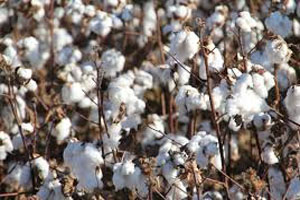
Oklahoma ranked fourth leading producer with 1.1mn bales
YarnsandFibers News Bureau 2017-11-28 16:00:00 – AtlusOklahoma to see 555,000 acres of cotton harvested in 2017 season, up from 290,000 acres in 2016 and 205,000 acres in 2015 due to alternative crop prices, cotton acreage has been ramping up, said Randy Boman, Oklahoma State University Southwest Research and Extension Center director and OSU Cooperative Extension cotton program leader.
According to the USDA November Crop Production Report indicates Oklahoma is now the nation’s fourth-leading producer of cotton with an estimated crop of 1.1 million bales. Last year’s crop was 617,000 bales. Oklahoma ginned 374,000 bales of cotton in 2015.
Boman said that they suffered a hard early freeze back at the end of October but USDA National Agricultural Statistics Service personnel had already been out to the fields and gathered their data, and so the effect of freeze damage probably was not taken into account.
Boman added that he would not be surprised if Oklahoma lost approximately 100,000 bales of the official NASS estimate. Even assuming the most widespread freeze-damage effect, Boman believes the state will produce more than 900,000 bales, still a significant increase over the past several years. This will challenge both harvesting and ginning capacity in Oklahoma.
Boman credits Oklahoma’s new national ranking to good weather, available irrigation water and state cotton producers using the latest crop genetics and production systems. Weather and water are always important factors but they are always working with producers to have the cotton genetics in place to take advantage of favorable growing years by using best management practices.
In addition to the early freeze, some cotton producers pushed planting this year right up to the crop insurance cutoff date. This will result in some fields not being harvested or a crop with both low yield and fiber quality. Insurance adjusters will evaluate these fields to determine if producers may be eligible for payments.
New high performance varieties produce both high yields and high quality when given good production environments. Harvesting and seed cotton technologies have improved. Today’s producers have the ability to harvest and module using the same machines. In turn, this reduces the amount of labor and number of machines required for harvesting, while also reducing the exposure of seed cotton in the field as it waits for ginning.
Cotton is graded by the USDA, and Oklahoma’s crop quality is evaluated at the Abilene, Texas, USDA classing office. Early results for the first 75,000 bales indicate various measures of fiber quality are good to excellent.
This means many Oklahoma producers should receive prices in the top end of the market. As the later-maturing fields begin to be harvested and ginned, Boman is expecting some lower qualities, which will reduce the value of the fiber.
Fortunately, Oklahoma has had three consecutive good growing seasons. The state’s cotton industry set records for per-acre yields of 876 pounds per acre in 2015 and then the all-time high of 1,021 pounds per acre in 2016.
Boman said that if they make the November NASS estimate, they will harvest the second-highest per-acre yield ever at 951 pounds per acre.
Cotton production has changed considerably in the last 20 years, and the rate of change in technology has skyrocketed over the past decade. The really good news is that cotton prices although not stellar it remains favorable based on today’s market.
Market Intelligence
Ask for free sample Report

experience
Customer Base
dedicated team
Countries Served Worldwide









